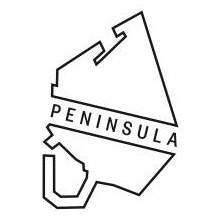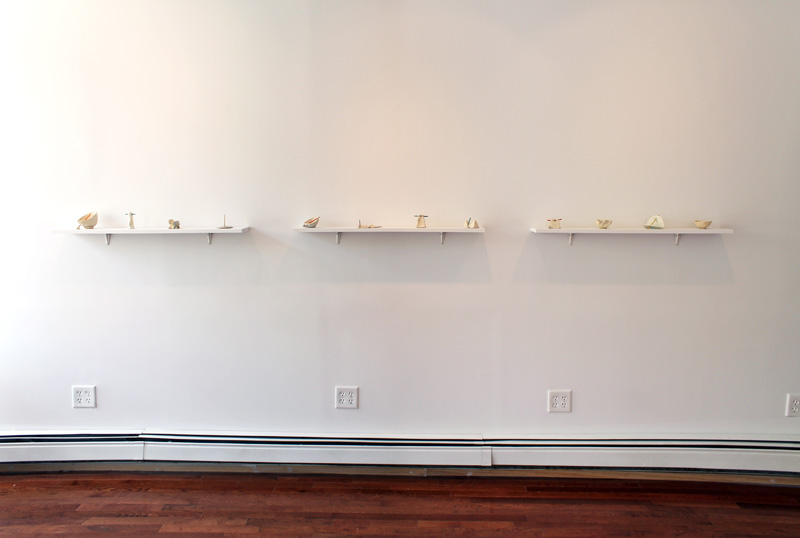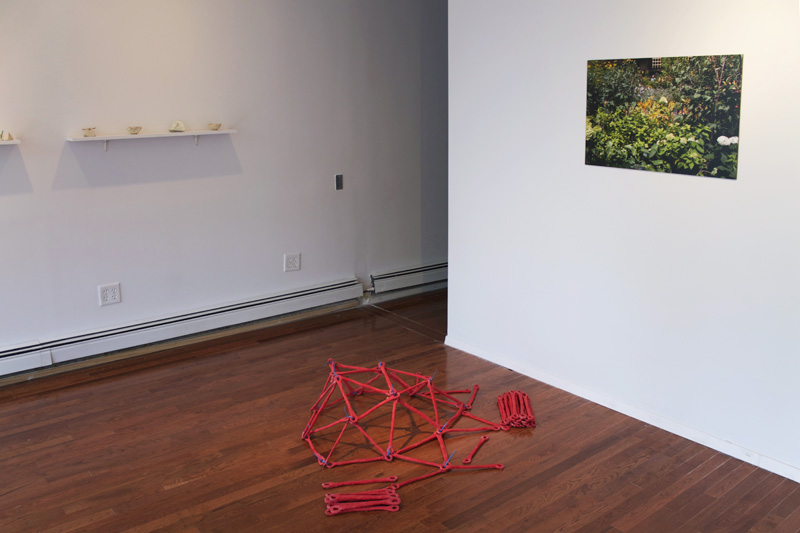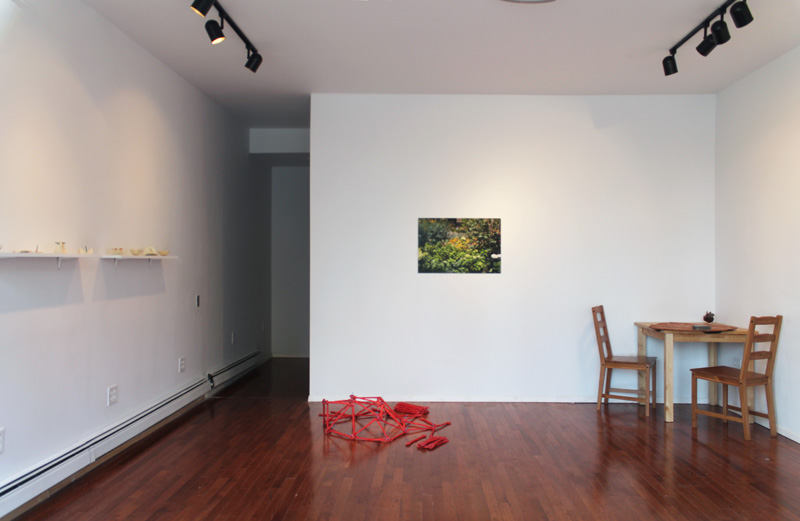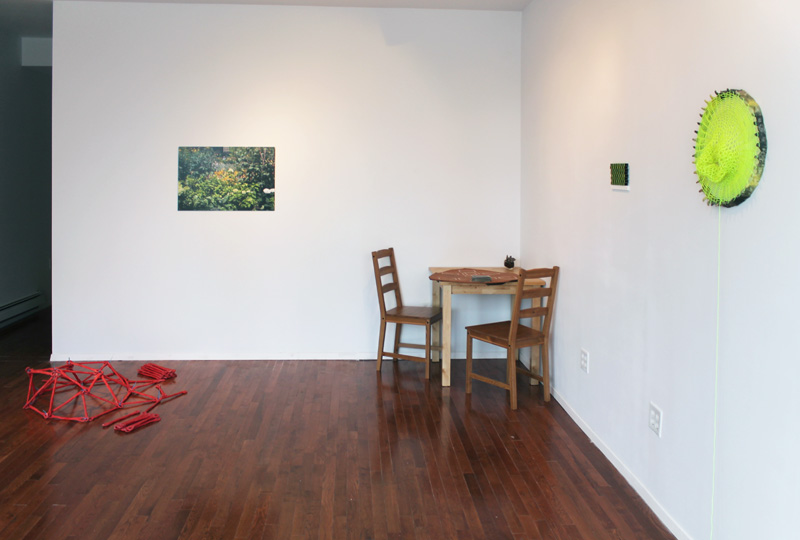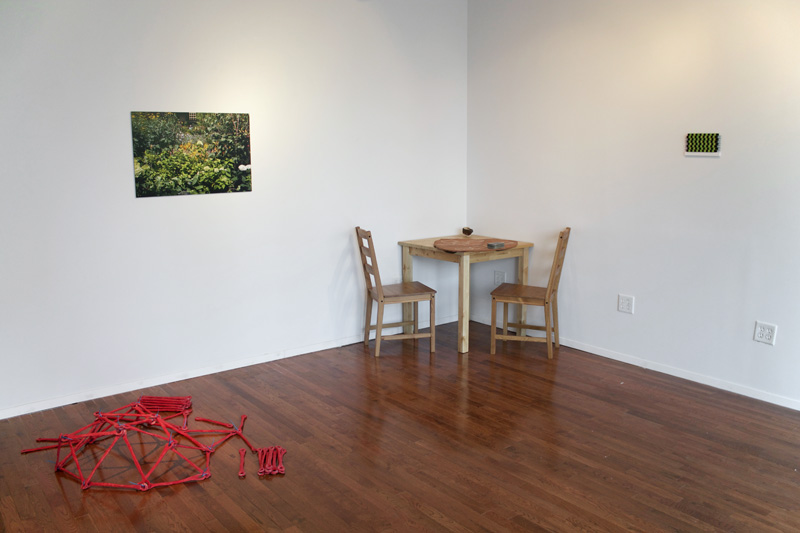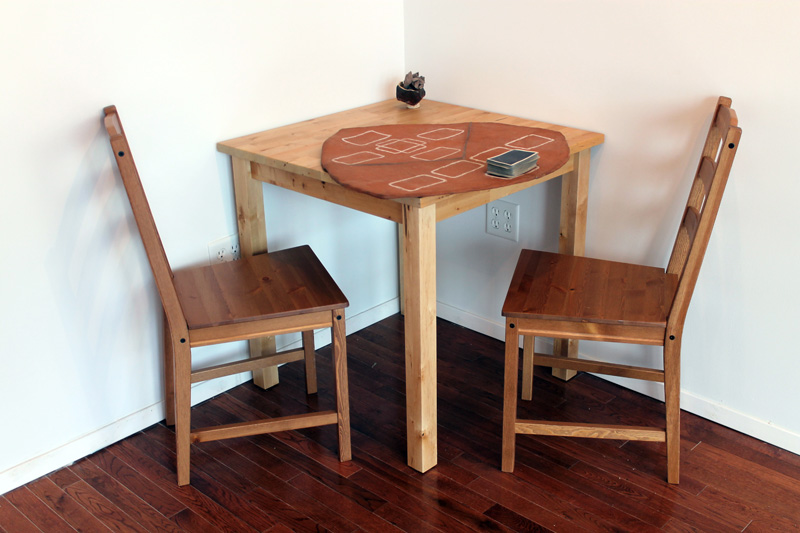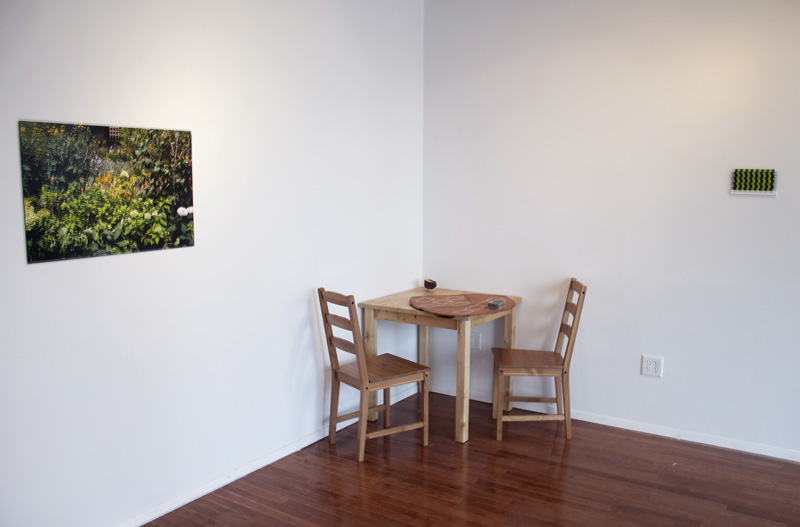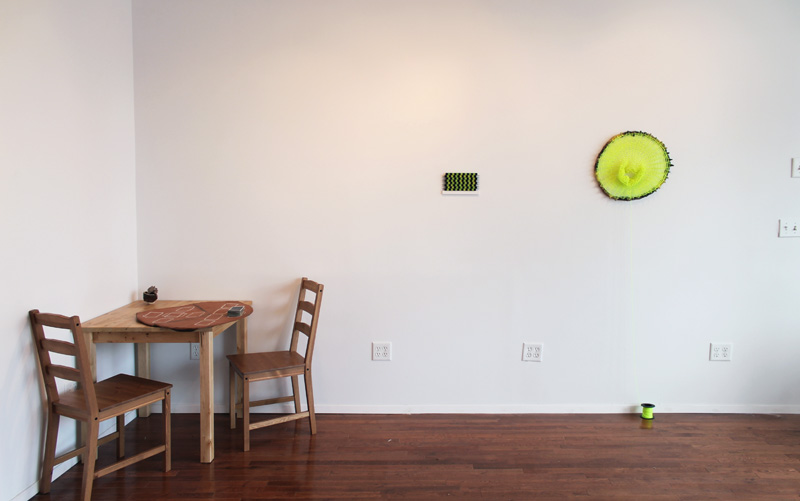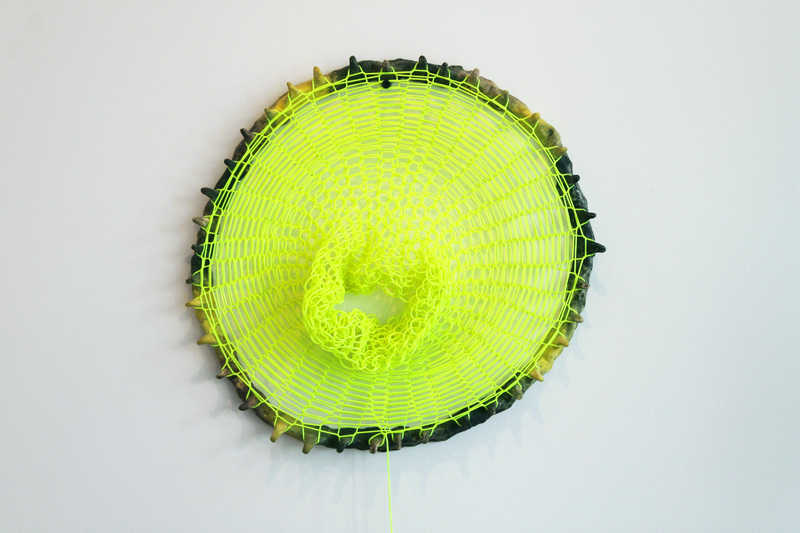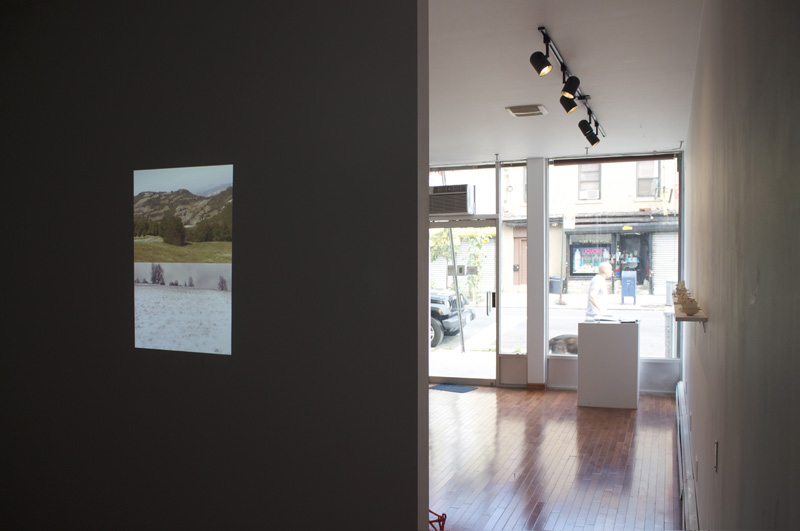Shifters
Leah Wolff and Ariel Yelen
July 21 - August 18, 2013
Peninsula Art Gallery is pleased to present Shifters, a two-person show featuring works by Leah Wolff and Ariel Yelen, curated by Rachel Valinsky.
In pragmatics, a subfield of linguistics, shifters are referential indexical signs whose meanings are context-dependent. They challenge the notion of an autonomous, self-contained system, by pointing to the meaning-generating quality of elements in or outside that system – activated through a relational logic. Also commonly referred to as deictics, shifters rely upon basic processes of human interaction and participant frameworks. The relationships embedded within these terms “make up what might be called an implicit playing field for interaction – a set of positions in deictic space, along with the expectations about how actors occupy these positions.”[1] This field is shaped not only through interaction, but also through the very interactive process that it helps to constitute – it is ever shifting.
Works in this exhibition act as deictical terms – they find their referents in the body and its motion in space, in relation to spatiotemporal changes and natural processes, or, ultimately through more direct forms of participation. They proceed through measurement and experimentation, pushing the pliable limits of the shifter and undermining the notion that any single system may unitarily deliver meaning.
Leah Wolff proposes alternative methods of (scientific) investigation, based not on rigid models whose purported accuracy is inevitably marred by systemic imprecision, but rather deeply linked to the move from the imaginary to the real and the gap or possible failure which exists in this move. In Cafe Wall I (2013), Wolff creates the illusion of tilt, slant and convergence, in what are in fact entirely parallel rows of wooden blocks. Wolff encourages the mind to inhabit the space between cognitive experience and logical reasoning – a state of superposition, which she has termed Middle Vision – through an imaginative expansion of a thing’s terms of possibility. Interpretation of the thing shifts continuously as understanding catches up with the idea that all individual stimuli can be apprehended as a meaningful whole, the parts of which might occupy all theoretical states at once.
Modular Dome proposes an expansive model for this kind of psychophysical connectivity: it is the image of a spatial network, the very model of relational meaning making.
In other works, Wolff generates new models for time telling and reading. Her Desktop Sundials are discrete works, clocks that tell time based on the sun’s positioning. Loom Clock II measures time as a function of the process of (de)generation of the loom, itself often used as a symbol of labor and organized modes of production. In the Reading Table, white shapes act as placeholders – shifters – for upcoming interactive experiences. These are the placeholders of time and possibility – the specific places through which the Tarot cards’ meanings shift and take form for each individual. Wolff will conduct sessions of card reading throughout the course of the exhibition on the following dates: Friday, August 2nd (7-9pm) and Sunday, August 11th (4-6pm).
Ariel Yelen locates the shifter within herself and within the space that surrounds her. In her work, the shifter finds its locus in her body as it moves through space. In the back room of the gallery, Yelen’s Mountain Drawing video will play on loop throughout the course of the exhibition. In the video, Yelen occupies both object and subjects positions at once. Crossing from one edge of the frame to the other, at times disappearing entirely from view, Yelen explores the movement of the body in time as it covers ground on two differing mountainous sites during different seasons. In this process, she also addresses the body’s presence within the parameters of a single video frame, calling attention to the way the body traverses it from left to right, and back again. Running, walking, skipping, and the absence of these activities when she goes off screen, trace a drawing in motion recorded by the camera. As her body shifts from one side to the other above and below simultaneously, it suggests itself as the shifting context, while the backdrop landscape serves as a stable, immoveable context, altered only by her presence.
Yelen’s work experiments with the process and effect of movement and constantly examines the possible positions, which the body can inhabit through performance. Embedding herself in her surroundings, Yelen’s work pushes the boundaries of the body by moving the body into photographic, sculptural, and video space. In Camouflage III, a site-specific performance and photograph, Yelen similarly alters the site in a double move of concealment and revelation. She draws attention to the act of masking effected by the chosen location, using her body as a sculptural tool. Turning the word “camouflage” on its head, she uses it both as a verb relating to the site, and as a noun, relating to her own activity. The word and work shift as the line between subject and object positions continues to be blurred.
LEAH WOLFF (born 1984 in Cleveland, Ohio) is a visual artist living and working in New York. Wolff earned her BFA (2006) with honors from Rhode Island School of Design. She received her MFA (2011) from Columbia University’s School of the Arts where she was awarded the Neiman Fellowship Award. Her sculptures, drawings and installations have been featured in three solo shows and many group exhibitions internationally and throughout the U.S. Her most recent solo show “It’s Been Hours” at Scaramouche, New York, was featured as a recommended show on the SculptureCenter Blog.
ARIEL YELEN is an artist living and working in Brooklyn, NY. She received her BFA from SUNY Purchase in 2011, and most recently attended residencies at Vermont Studio Center in Johnson, Vermont, and Arte Studio Ginestrelle in Assisi, Italy. Ariel will be attending Art Farm in Marquette, Nebraska in September as a resident. Ariel's work engages with concepts of identity, performance, and the connection between the two. In utilizing her body as a primary medium, she allows for both her solo and her participatory performances to expose an intimate, contemplative, and comedic process
Photography by Guy Ben-Ari
[1] Hanks, William F. “The indexical ground of deictic reference.” in Rethinking Context: Language as an Interactive Phenomenon.” ed. Duranti, Alessandro and Charles Goodwin, p. 55
